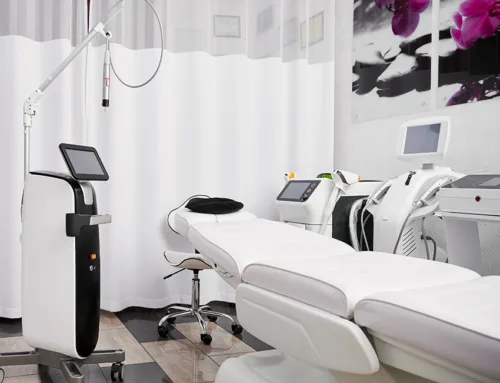What Is the Best Healthcare Marketing Strategy?
Looking for an effective healthcare marketing strategy? This article provides a comprehensive guide on how to attract and retain patients in a competitive healthcare landscape. You’ll discover essential strategies that go beyond simple advertisement, including market research, digital marketing, regulation compliance, and patient engagement techniques.
Key Takeaways
- Healthcare marketing focuses on building trust, engaging patients, and promoting services while adhering to regulations to ensure patient safety and privacy.
- Effective strategies rely on market research, clearly defined objectives, and data analytics, allowing organizations to adapt to patient needs and assess marketing performance.
- Consistency in branding, ethical practices, and leveraging digital platforms like SEO and social media are essential for enhancing patient experience and maintaining competitiveness in the healthcare sector.
Understanding Healthcare Marketing
Understanding healthcare marketing underpins successful strategies in the industry. Unlike other sectors, it involves not only promoting services but also building trust and engaging with patients throughout their healthcare journey. This sophisticated process targets both new and existing patients to enhance care and drive growth.
Healthcare marketing also plays a pivotal role in educating patients, empowering them to take charge of their healthcare decisions and stay informed. Moreover, it must adhere to stringent regulations that safeguard consumer safety and privacy. Therefore, effective healthcare marketing strategies skillfully balance service promotion with compliance to regulatory standards.
Scope of Healthcare Marketing
The primary objective of healthcare marketing is to endorse the services within the healthcare sector while also enhancing brand recognition and establishing a connection with patients. It focuses on developing enduring relationships that contribute to trust-building, which is crucial for securing patient loyalty. This field stands out from other areas of marketing due to its non-reliance on an immediate financial exchange for the advertised services, highlighting its unique and multifaceted nature.
Successful techniques in this arena integrate extensive market research with data examination, utilize both new-age digital platforms as well as time-honored approaches. The creation of informative content alongside user-centric websites and interactive features plays a significant role in fostering trustworthiness and captivating audiences.
In the realm of healthcare marketing, it’s essential to adhere to ethical guidelines by providing accurate depictions of offered services without setting implausible expectations, maintaining integrity is key in these endeavors.
Importance of Healthcare Marketing for Organizations
Healthcare marketing helps organizations understand patient needs, crucial for retention and acquisition. Market research enables adaptation to changing patient preferences, ensuring relevance and competitiveness.
Staying informed about healthcare marketing trends is also essential for reaching patients and healthcare professionals effectively.
Conducting Market Research
Effective healthcare marketing relies on comprehensive market research, essential for attracting and retaining patients in a competitive landscape. By aligning marketing goals with broader business objectives, actions become focused and strategic, yielding measurable outcomes. This alignment helps develop a distinctive brand identity that stands out in the market.
SWOT Analysis for Healthcare Providers
A SWOT analysis identifies internal strengths and weaknesses alongside external opportunities and threats. Understanding strengths can improve services and efficiency while recognizing opportunities aids in strategic planning and resource allocation.
Ideally, healthcare providers should conduct a SWOT analysis twice a year to stay updated with both internal and external factors impacting their marketing strategies.
Identifying Target Audience
Identifying the target audience tailors marketing strategies to specific patient needs. Creating patient personas helps marketers understand and cater to different patient groups.
By utilizing consumer-level data, healthcare marketers can effectively target populations, ensuring that their marketing efforts are relevant and impactful.
Setting Clear Objectives
In healthcare marketing, having clear and measurable objectives steers the strategy. These goals ensure that marketing initiatives align with the wider organizational aims, fostering strategic focus and delivering outcomes that can be quantified.
Establishing KPIs for Success
In the healthcare industry, the success of marketing strategies is assessed through key performance indicators (KPIs), which offer quantifiable evidence of their effectiveness in achieving set goals. To accurately gauge organizational performance, these KPIs must be explicitly defined and measurable.
To thoroughly monitor the aims of healthcare marketing, it is important to choose a diverse array of KPI categories. Essential metrics include rates of patient acquisition, conversion metrics, Patient Acquisition Cost (PAC), Patient Lifetime Value (PLV), and overall conversion rates, all vital components for assessing the efficacy of healthcare marketing strategies.
SMART Goals in Healthcare Marketing
The SMART framework is an essential tool in healthcare marketing, designed to set clear and effective goals. Each goal is required to be Specific, ensuring clarity and focus. For instance, rather than aiming to simply “increase patient numbers,” a more specific goal would be to “increase new patient consultations by 15% within the next quarter.” This specificity helps direct all efforts toward a concrete target.
The goals must also be Measurable, Achievable, and Relevant. Measurability allows for the tracking of progress, such as the number of new consultations or the rate increase in follow-up visits, providing tangible benchmarks to assess effectiveness. Goals should be Achievable, set within the realm of possibility given current resources and constraints to keep the team motivated and focused. Additionally, each goal needs to be relevant to the broader business objectives and the overall mission of the organization, ensuring that all marketing efforts align with the strategic direction of the healthcare facility.
Goals should be Time-bound, with established deadlines that create a sense of urgency and help prioritize resources. This component compels teams to organize their efforts and measure progress within a specified timeframe, fostering a disciplined approach to marketing execution. Implementing SMART goals in healthcare marketing not only enhances strategic focus and efficiency but also significantly boosts patient engagement and organizational outcomes in a competitive market.
Building a Strong Brand Identity
Establishing a strong brand identity enhances recognition and builds credibility with both patients and professionals. By developing a solid brand presence, organizations can differentiate themselves and reinforce relationships with their patients.
Consistent Branding Across All Channels
Ensuring consistent branding across all platforms contributes to a unified patient experience by improving recognition and strengthening the organization’s message, which simplifies the process for patients to recognize the provider.
Developing a Unique Value Proposition
A unique value proposition is crucial for distinguishing a healthcare organization from its competitors by clearly outlining how it meets specific patient needs. This proposition helps attract and retain a solid patient base by emphasizing the unique benefits the organization offers.
Concentrating on enhancing patient outcomes with its offerings, a compelling value proposition positions a healthcare practice as a more attractive option than its competitors. This strategic positioning not only attracts patients but also boosts their overall satisfaction and loyalty to the practice.
Leveraging Digital Marketing Strategies
Digital marketing strategies engage healthcare consumers through preferred channels. An effective healthcare marketing strategy ensures effective patient reach and connection.
Search Engine Optimization (SEO) for Healthcare Websites
SEO lures patients who are looking for particular treatments and ailments. Constructing backlinks improves the online presence, credibility, and search engine positions of healthcare websites. By incorporating detailed content that focuses on various treatments and medical conditions, organic search traffic can see a marked rise.
It is advisable for local medical practices to commence the process of building backlinks only after they have developed an extensive library of strong content.
Pay-Per-Click (PPC) Advertising
Utilizing PPC advertising enhances the efficacy of marketing efforts by targeting individuals who are actively seeking medical services, thereby boosting the likelihood of conversions.
Social Media Marketing for Healthcare Providers
Healthcare providers can utilize social media platforms to foster direct and real-time communication with patients, which is essential for establishing an online presence and engaging both existing and potential new patients.
Through the strategic use of social media, healthcare providers are able to strengthen trust with their audience, increase patient engagement levels, and efficiently market their healthcare services.
Content Marketing in Healthcare
Content marketing educates and engages patients by creating valuable information that addresses their needs and enhances their experience.
Creating Educational Content
Healthcare organizations have the capability to effectively educate their audience by leveraging educational materials such as blogs, infographics, and videos. This content serves to inform patients about their own health and available treatment choices.
By providing education that empowers patients, there is a subsequent improvement in healthcare outcomes along with heightened involvement between patients and healthcare providers.
Video Marketing for Medical Practices
According to 92% of marketers, video content is crucial for enhancing patient engagement within medical practices. Video marketing engages patients on an educational level and fosters trust by visually demonstrating medical procedures and concepts, thus aiding in better comprehension.
Explainer videos, in particular, play an essential role in breaking down complicated medical information into easy-to-understand segments. These videos help patients gain a clearer understanding of their conditions and the available treatment options, empowering them with the knowledge to make informed healthcare decisions.
Enhancing Patient Experience
Improving the patient experience fosters trust and strengthens loyalty towards a brand, which is a significant factor in influencing patient allegiance and confidence in healthcare services.
Reputation Management
Reputation plays a crucial role in influencing decision-making. Positive feedback and reviews significantly impact how individuals perceive a brand, service, or organization. Streamlining the collection of feedback can be made more efficient by automating the review acquisition process, ensuring consistent and actionable insights.
Personalized Communication
Regular and tailored interactions that align with patient preferences strengthen bonds, boosting loyalty and trust in the process of personalized communication.
It is crucial to tailor communication strategies according to what patients prefer as this adaptation significantly fortifies relationships.
Utilizing Data Analytics
Utilizing data analytics sharpens marketing strategies in healthcare, guaranteeing both efficacy and adherence to regulations. It aids in crafting outstanding patient encounters, which result in favorable feedback and an improved reputation for the provider.
Tracking and Analyzing KPIs
Monitoring KPIs allows healthcare organizations to oversee their performance and pinpoint areas that need enhancement. By analyzing key performance indicators regularly, these organizations can recognize both their strengths and shortcomings, which pave the way for educated decisions and constant improvement.
Using Patient Feedback for Improvement
Gathering patient opinions through surveys can significantly improve marketing strategies, as it sheds light on both satisfaction levels and the quality of service provided. Utilizing this feedback refines healthcare services and the marketing tactics used to promote them. It is crucial to conduct consistent patient satisfaction surveys in order to obtain meaningful feedback that can steer enhancements in both patient care and how those services are delivered.
The Net Promoter Score (NPS) is a valuable tool for assessing whether patients would recommend a practice, which serves as an indicator of overall satisfaction. To establish a robust online presence, it’s important to actively interact with and respond to patient feedback.
Ensuring Compliance with Regulations
It is essential to comply with healthcare marketing regulations in order to maintain patient privacy and prevent any legal consequences. Ensuring ethical practices within marketing efforts not only builds trust with patients but also upholds the integrity of the healthcare industry.
HIPAA Compliance
Under HIPAA regulations, written consent is required before using protected health information (PHI) for marketing purposes. Organizations must obtain explicit, informed, and documentable authorization to use PHI in advertising, ensuring they comply with HIPAA guidelines.
Adhering to these regulations is vital for protecting patient privacy, maintaining trust, and avoiding legal repercussions.
Ethical Marketing Practices
Ethical marketing in the healthcare sector prioritizes transparency, honesty, and patient welfare over financial gains. Adhering to moral principles builds trust and enhances reputation, ensuring long-term success. This approach not only supports ethical business practices but also aligns with the overarching goal of healthcare to improve patient outcomes.
Adapting to Industry Trends
The healthcare sector is continually evolving, driven by advancements in digital solutions and changing consumer expectations. Staying attuned to these trends is essential for maintaining competitiveness and delivering effective services.
Telehealth and Remote Services
Telehealth services are experiencing significant growth, reflecting a broader trend toward remote healthcare solutions. Marketers must adapt their strategies to enhance accessibility and convenience, ensuring these technologies meet the needs of patients and providers alike.
Digital Transformation in Healthcare
The shift toward digital platforms has redefined how patients seek and access healthcare information, emphasizing the importance of an online presence.
Healthcare organizations can effectively engage digitally-savvy patients by utilizing online channels, optimizing with medical SEO, leveraging programmatic advertising, and implementing content marketing strategies tailored to healthcare practices.
Summary
In essence, creating an effective healthcare marketing strategy requires a holistic, adaptable approach centered on patient needs. It’s crucial to understand the fundamentals of healthcare marketing, conduct extensive market research, and set clear, precise goals while maintaining a strong brand presence. Integrating digital marketing strategies enhances content engagement, enriches patient experiences, and leverages data analytics to increase the effectiveness of marketing campaigns. Compliance with legal standards and staying responsive to industry trends are essential for ongoing success.
Healthcare organizations that adhere to these principles can formulate marketing strategies adept at not only drawing in new patients but also fostering trustworthiness and devotion among current ones. Staying agile and receptive to shifts within the landscape of healthcare marketing is paramount. Always giving precedence to what matters most, the needs and inclinations of patients.









